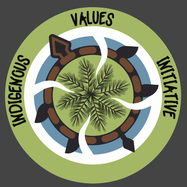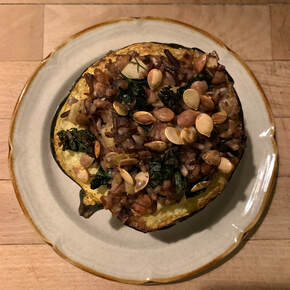- Home
-
All Products
- eGift Card
- Sleep Balm
- CBD Sleep Balm
- Recovery Balm
- CBD Recovery Balm
- Immunity Balm
- Little Buffalo Balm
- Simply Balm
- Heart & Soul Duo
- Magnesium Salt Soaks (1.85 oz)
- Magnesium Salt Soak (8 oz)
- Magnesium Salt Soak Bundle
- Self Care Candle Gift Set: Calming
- Self Care Candle Gift Set: Soul Warming
- Sleepy Buffalo Gift Set (2-Pack)
- The Gift of Wellness Set (3-Pack)
- The Gift of Wellness Set (2-Pack)
- Craft Your Own Gift Set (3-Pack)
- ADD ON: Extra Burlap Gift Bag
- Find in Store & Events
- Testimonials
- Contact
- Buffalo Beauts Partnership
- Blog
 As November is Native American Heritage Month, we will be donating to support the Haudenosaunee Indigenous Values Initiative to raise awareness about Indigenous history and the ongoing struggle of Indigenous people. We acknowledge that we as a business and as individuals are on Haudenosaunee land here in Western New York and recognize the need for us to learn about, and redistribute wealth to, the Indigenous communities that have experienced land theft and genocide. The Haudenosaunee Indigenous Values Initiative website offers this information about their organization and mission: NYA•WEÑHA SKÄ•NOÑH: Thank you for being well The Indigenous Values Initiative is dedicated to articulating, disseminating and promoting values expressed by the leadership of the Onondaga Nation, the Central Fire (or Capital) of the Haudenosaunee Confederacy (made up of the Seneca, Tuscarora, Cayuga, Onondaga, Oneida and Mohawk nations). Haudenosaunee means “People of the Longhouse,” and are most often mistakenly referred to as the “Iroquois”). The Onondaga Nation is unique to the world, in that they are the only Native Nation recognized by the United States, and the United Nations, that still operates according to their pre-colonial clan form of government. The Haudenosaunee organize themselves in a matrilineal clan system of extended families. Their ceremonies are aligned to phases of the moon, and are based on thanksgivings to the natural world. As we all face climatic changes, it is urgent that human beings reorient themselves to the rhythms of the earth. Indigenous value systems need to be heeded in these troubled times. Intercultural understanding, however, must be based on healing generations from colonization, missionization, genocide and assimilation. The Haudenosaunee understand the need for collaboration with individuals, institutions, communities, governments and businesses to articulate, disseminate and promote the ancient and enduring values of Indigenous Peoples traditions to the world. The Indigenous Values Initiative (IVI) raises funds to support educational projects which will disperse information through conferences, classes, exhibitions, publications, speakers, expositions, etc. (https://indigenousvalues.org/about/) As November is Native American Heritage Month and we are located on Haudenosaunee land, we will be donating to the Indigenous Values Initiative to support this organization's crucial work in advocacy and education. We also encourage you to read about the Landback Movement which states that "To truly dismantle white supremacy and systems of oppression, we have to go back to the roots. Which, for us, is putting Indigneous Lands back in Indigenous hands." (https://landback.org/)
0 Comments
We really need to catch you up on the new places that are offering our magnesium products! These are six local businesses we are very excited about working with:
We are so thankful for the support of these local businesses and we hope you take some time to check them all out!  This may sound strange, but we want you to take a moment and Google “heart disease” and “hard water.” Go ahead! Then, take a moment and scroll through the articles that come up. (And, no, obviously not everything on Google is reliable. But you should be seeing some scientific journal articles come up pretty high on the list…) What could hard water possibly have to do with heart disease? Minerals. In particular, high levels of calcium and magnesium. And many studies have found a correlation between harder water and lower levels of cardiovascular disease in communities. If you want to read more about this, Dr. Mildred Seelig and Dr. Andrea Rosanoff explain it in greater depth in the first few pages of The Magnesium Factor (2003, p. 7-10). Why does having more minerals in your water matter for your cardiovascular health? According to Seelig and Rosanoff (2003), “Heart muscle, when healthy, contains even more magnesium than other muscles do. And when magnesium levels become low, they can drop more in heart muscle cells than in other muscles [...] Blood vessel muscle cells need healthy amounts of magnesium to relax properly after each contraction. They can become stiff and inflexible if their magnesium gets too low” (p. 10). This happens especially if calcium (which tenses or stiffens muscles) is very high, perhaps through supplementation, and is not balanced out by high magnesium. In Transdermal Magnesium Therapy (2011), Dr. Mark Sircus even goes so far as to say that “If you are interested in heart health you have no choice but to be interested in magnesium” (p. 29). He claims that, if magnesium in the heart muscle drops too much, it can cause rhythm disorders or even spasms and cramps (p. 30). In other words, it can cause angina and even heart attacks. (For more details about how calcium and magnesium interact in heart muscle, check out this article entitled “Magnesium and Heart Disease: What’s the Link?” by Juliann Schaeffer. Schaeffer cites Seelig and Rosanoff, as well as sharing Dr. Carolyn Dean’s proposal that maintaining high levels of magnesium may actually be more important than being completely focused on cholesterol as is so common in cardiovascular medicine today.) Magnesium deficiency is also an issue in diabetes and insulin resistance - we will cover that in another newsletter because there is so much information to include! Does this mean that you can switch from taking your heart medication to taking magnesium? Definitely not - you’ll want to continue any current medications and talk to your doctor about adding magnesium - but it may be able to help! Are there any situations where magnesium is not appropriate to take? It may not be the right choice for you if you have very low blood pressure already or have a kidney condition. Also, it could be a problem for those taking blood thinners like Coumadin or Warfarin. In general, we always advise talking to your doctor about the magnesium (and the essential oils in our balms) if you are on medication!  This recipe is a delicious and satisfying way to use local harvest vegetables that are in season right now. Choose acorn, delicata, or butternut squash - use any squash that looks good in the grocery store or your CSA box! The recipe includes wild rice, kale, and walnuts (which are all high in magnesium and other minerals), and don't forget to save and roast those squash seeds to put on top - squash and pumpkin seeds are some of the most magnesium rich foods you can eat! Serves 4 Ingredients:
Preheat oven to 400 degrees. Start cooking wild rice according to package directions - it will take longer than white or brown rice, usually about 45 minutes after bringing it to a boil! Brush the insides of the squash with 2 tblsp olive oil or butter and sprinkle with ½ tsp of the sage as well as salt and pepper. Place squash cut side up on tinfoil lined cookie sheet and roast for 45-50 minutes (or until fork tender). While squash is roasting, line a small cookie sheet with tinfoil. Toss squash seeds with 1 tsp olive oil and spread them on the cookie sheet in a single layer. Sprinkle with sea salt and roast on separate rack in 400 degree oven for 8 minutes or until lightly toasted. Heat the other 2 tblsp olive oil or butter in a large skillet over medium-high heat. Add chopped onion and cook for 2-3 minutes until translucent. Add chopped mushrooms and cook 3-5 minutes until they start to brown. Add sausage and cook until browned as well. Add apple and walnuts and cook until apple starts to soften. Add kale and cook until wilted. When wild rice is done cooking, add it to skillet and stir to combine with the rest of the stuffing ingredients. Season stuffing with the other ½ tsp of sage, ½ tsp thyme, and salt and pepper to taste. (If you are using fresh herbs, you may find that you need more.) Scoop filling from skillet into acorn squash halves and return to oven for 10-15 minutes until it starts to brown on top. Sprinkle with roasted squash seeds and serve! You will likely have extra filling. It can be eaten on its own as leftovers the next day or frozen to use for a quick stuffed squash dinner in the future! |
AuthorsNikki Bradshaw Archives
February 2022
Categories
All
|
- Home
-
All Products
- eGift Card
- Sleep Balm
- CBD Sleep Balm
- Recovery Balm
- CBD Recovery Balm
- Immunity Balm
- Little Buffalo Balm
- Simply Balm
- Heart & Soul Duo
- Magnesium Salt Soaks (1.85 oz)
- Magnesium Salt Soak (8 oz)
- Magnesium Salt Soak Bundle
- Self Care Candle Gift Set: Calming
- Self Care Candle Gift Set: Soul Warming
- Sleepy Buffalo Gift Set (2-Pack)
- The Gift of Wellness Set (3-Pack)
- The Gift of Wellness Set (2-Pack)
- Craft Your Own Gift Set (3-Pack)
- ADD ON: Extra Burlap Gift Bag
- Find in Store & Events
- Testimonials
- Contact
- Buffalo Beauts Partnership
- Blog

 RSS Feed
RSS Feed